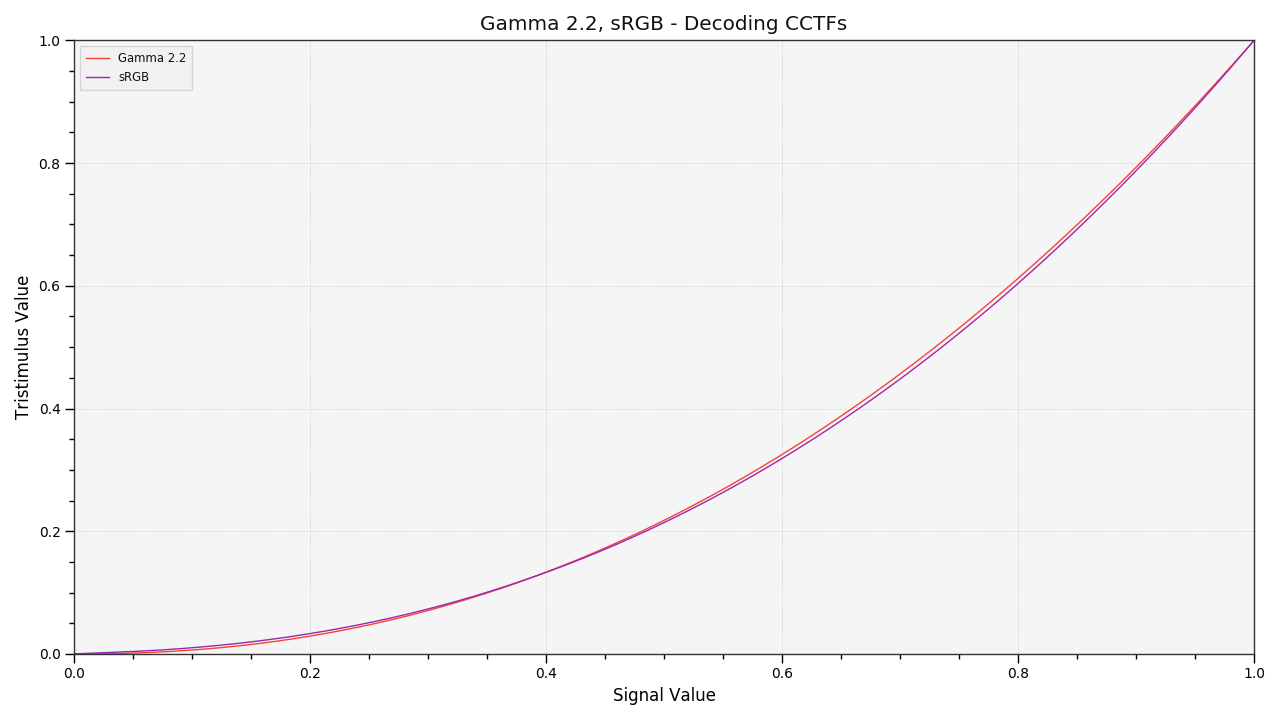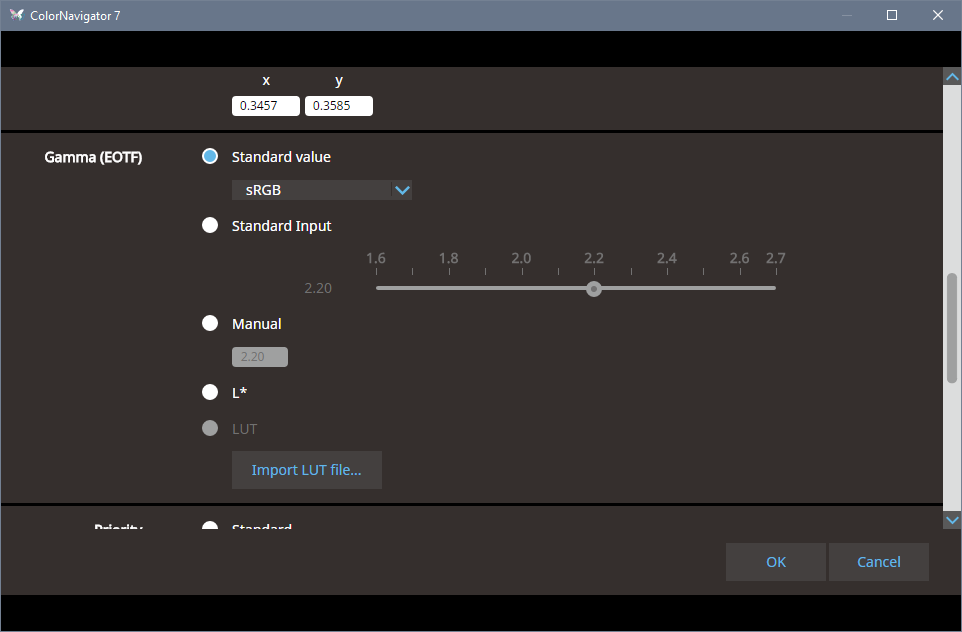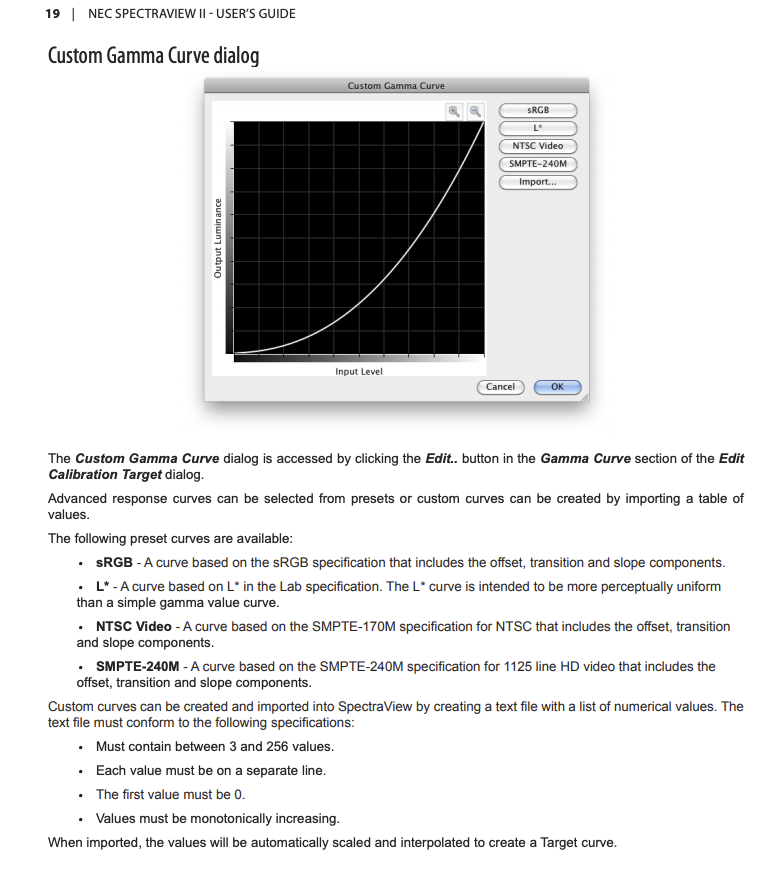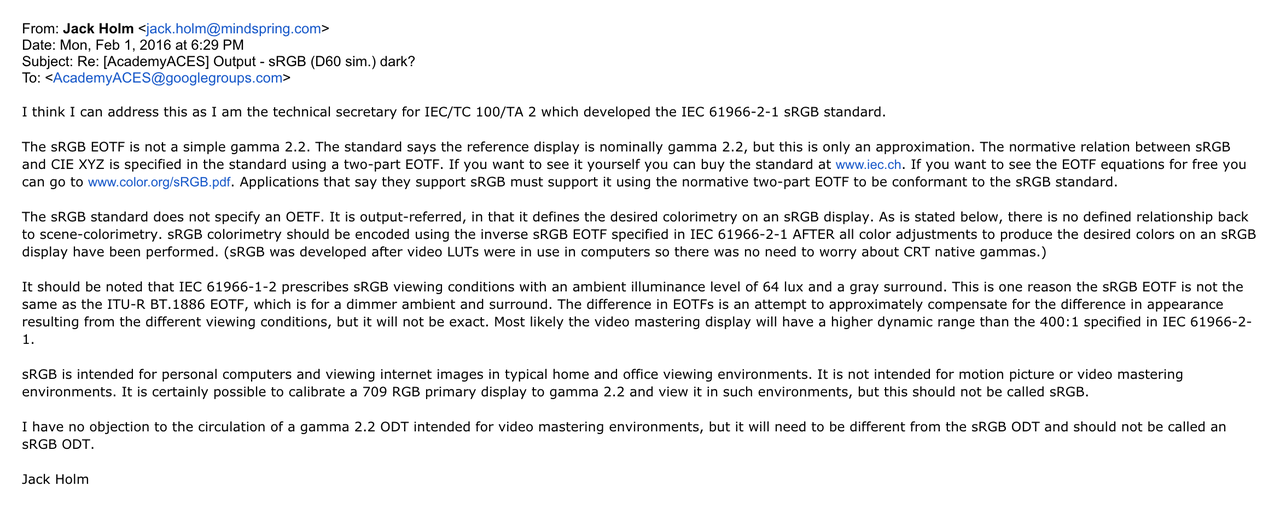sRGB EOTF: Pure Gamma 2.2 Function or Piece-Wise Function?
A topic that caused a great deal of passionate discussions is that of the sRGB Electro-Optical Transfer Function (EOTF): Should it be the pure Gamma 2.2 function or the piece-wise function defined in IEC 61966-2-1:1999 Standard?
To put is another way: Should a display calibrated to sRGB adopt the pure Gamma 2.2 function or the piece-wise function?

A Gamma 2.2 function only approximates the piece-wise function defined in IEC 61966-2-1:1999 Standard.
IEC 61966-2-1:1999 Standard lacks the clarity that would give the definitive answer to the EOTF question. The quest takes on a muddy path when the standard states what follows in 2.1 Reference Display Conditions:
Relative to this methodology, the reference display is characterised by the equation below where \(V\prime{sRGB}\) is the input data signal and \(V{sRGB}\) is the output normalized luminance.
\(V{sRGB} = (V\prime{sRGB} + 0.0)^{2.2}\)
While it is effectively common to find displays adopting the Gamma 2.2 function as an EOTF, many, such as EIZO and NEC are shipping with the IEC 61966-2-1:1999 Standard piece-wise function:

EIZO - Colour Navigator 7

NEC - Spectral View 2 - Cameron Rad @ Lift-Gamma-Gain
Fortunately, Jack Holm, technical secretary for IEC/TC 100/TA 2 which developed the IEC 61966-2-1:1999 Standard is unambiguous about the sRGB EOTF being the piece-wise function:

Message from Jack Holm, addressed the 1st February 2016 to the Academy ACES Google Group.
It should then be no surprise that the ACES sRGB ODT also uses the piece-wise function. To finish and for good measure, let us quote Charles Poynton:
It took me 4 years to decide that the sRGB linear “toe” needs to be part of reference. CRTs were pure power function (GOGO if you like) all the way down to zero. No LCD shipped in the last 19 years has exhibited that behaviour externally. They all have a linear segment. QED.
Conclusion
If you are calibrating your display to the sRGB IEC 61966-2-1:1999 Standard, your calibration target should be the piece-wise function. If you are producing a display compliant with the sRGB IEC 61966-2-1:1999 Standard it should adopt the piece-wise function.
Comments
Comments powered by Disqus